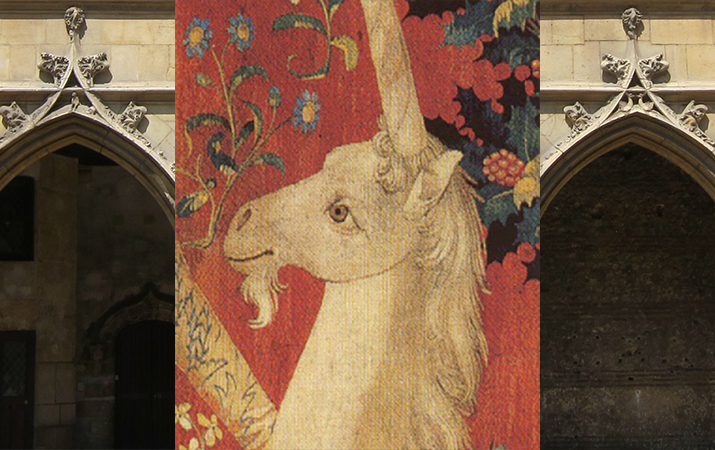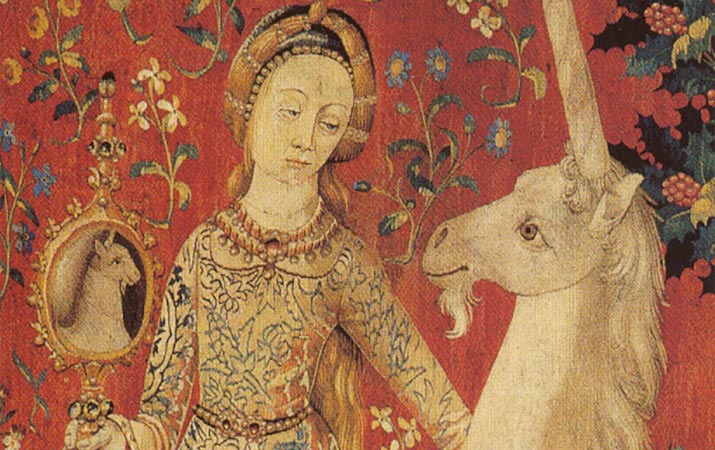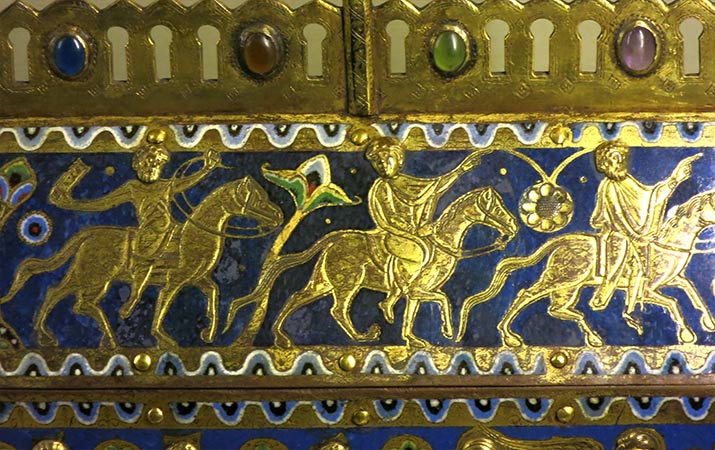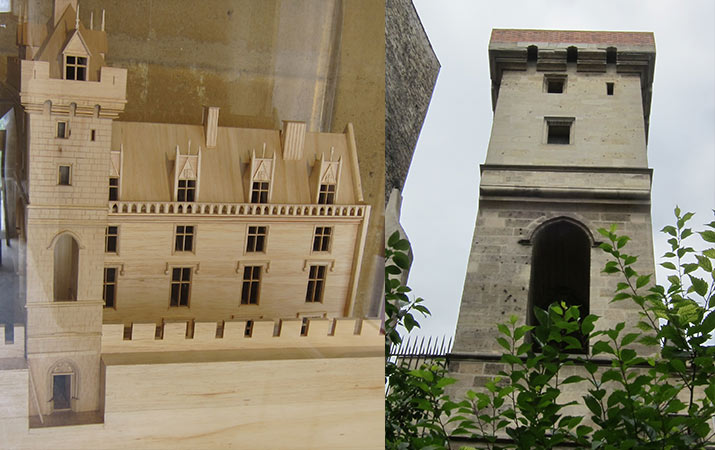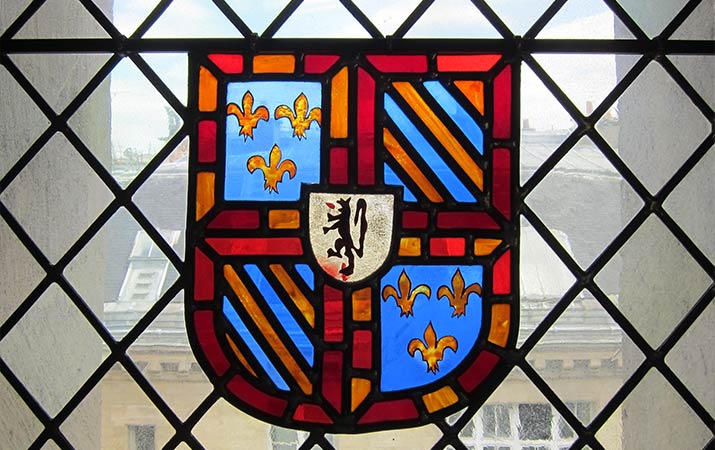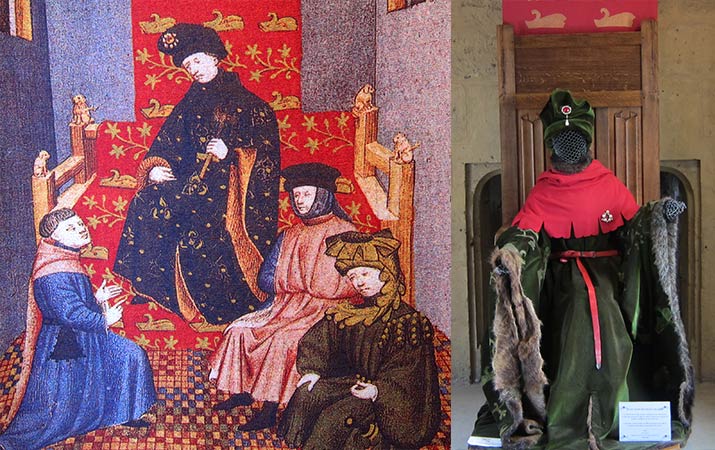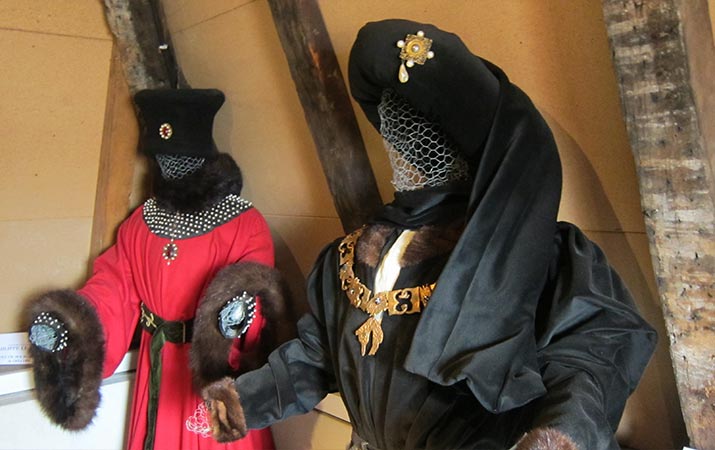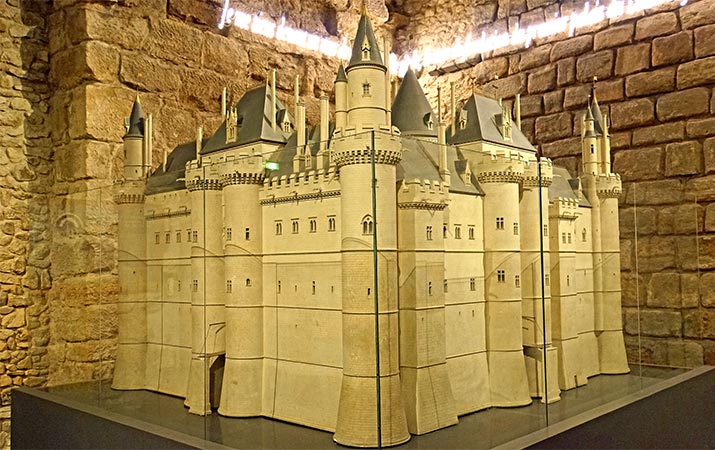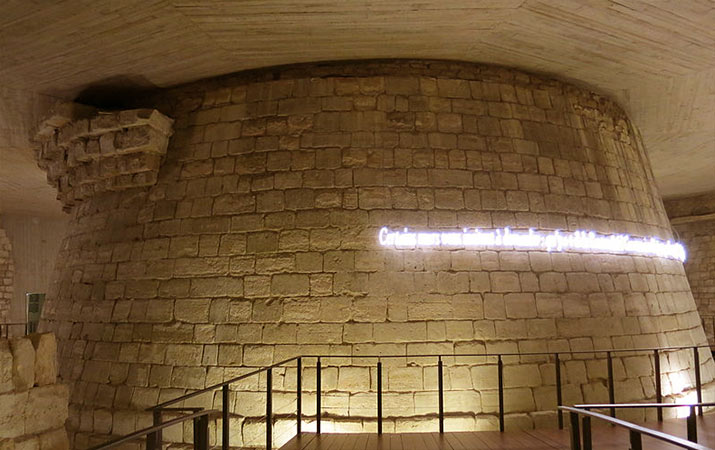In the Middle Ages, Paris was the capital of France, and largest city in Europe at the end of the 13th century.
The University of Paris was a famed center of learning, Paris bustled with merchants and markets, Notre Dame cathedral towered over Ile de la Cite, multistory buildings were crowded together in a maze of narrow streets.
Impressive stone walls surrounded the city, a massive fortress was constructed on the site of the Louvre museum today, medieval kings and queens lived in the great castle Chateau de Vincennes.
Notre Dame cathedral (especially its gargoyles) is one of the best known medieval landmarks, but exploring Paris with kids, also visit the Museum of the Middle Ages, Tour Jean Sans Peur, remains of a medieval fortress under the Louvre, and tallest castle keep in Europe, Chateau de Vincennes.
Museum of the Middle Ages (Musee National du Moyen Age)
It’s fun to visit this charming, small scale museum and garden, located in what was a residence (Hotel de Cluny) for Benedictine monks in the Middle Ages. The monks’ residence incorporated rooms from even older ancient Gallo-Roman baths (Terme) into the house.
On display in the museum are medieval artworks, including the exquisite “The Lady and the Unicorn” tapestries.
Before going upstairs to see the Unicorn tapestries, on the ground floor, check out glowing stained glass from Sainte Chapelle, original sculptures from the exterior of Notre Dame, medieval tombstones, ivory carvings and chests. Also explore the huge 1st century Roman frigidarium with pool, and Roman carvings of Jupiter, Mars and Vulcan.
The Lady and the Unicorn tapestries are displayed in their own separate gallery. The tapestries are big, and displayed where kids can see them up close.
Woven of silk and wool, the six tapestries were made in the late 15th century.
Five of the tapestries have a theme – sight (unicorn looks at a mirror), taste (lady feeding her parakeet), hearing (playing the organ), smell (lady has flowers in her hand) and touch (lady holds the unicorn’s horn).
In the sixth tapestry, the lady stands before a blue and gold pavilion, holding a jewelry box. She is surrounded by the unicorn, lion, and a fluffy dog – the meaning of this tapestry is a mystery.
In each tapestry are three crescent moons on a blue stripe – this is the coat of arms of the family who ordered the tapestries. The tapestries are filled with many animals beside the unicorn – lions, dogs, bunnies, monkeys, foxes, birds.
Continue to other galleries on this floor, to see golden Visigoth crowns, reliquaries decorated with enamel and precious stones, more tapestries of medieval life, and a room with medieval armor – helmets, chain mail, swords and shields.
Outside the museum is a shady garden and trees with benches (eat your picnic lunch outside if the weather is nice), and a playground for little kids.
Museum of the Middle Ages is closed on Tuesday, entrance is at 6 Place Paul-Painleve, Line 4 St. Michel metro stop.
Tour Jean Sans Peur
One of our favorite medieval sites in Paris is the Tour Jean Sans Peur, a beautifully preserved tower, centrally located in busy modern Paris.
The tower (for defense) was part of a large manor house of the dukes of Burgundy.
Start at the lowest level, to see crumbly ancient city walls from around 1200 (tower was built into the earlier walls), and a medieval tavern. On the fireplace is coat of arms of the duke of Burgundy. A mannequin at the table is a customer with simple food and drink.
Climb up the well worn stairs, stop to look up at the vaulted ceiling decorated with oak leaves and glass windows with duke’s coat of arms. Jean Sans Peur coat of arms – fleur de lis and lion of Flanders – is combined with his wife Marguerite’s coat of arms – stripes of Bavaria and lion of Holland.
The first room is unfurnished, but the fireplace is large and take a look at the latrine (bathroom) with red walls, and a nice urn for washing hands. Instead of toilet paper, straw would have been used.
Continue up to the next room, Jean Sans Peur “bedroom,” although this would have been a general purpose room where the duke slept, met with his councilors and vassals, and conducted administrative business.
On the top floor are three mannequins of the dukes of Burgundy, dressed in rich medieval fur trimmed robes, decorated with jewels and golden necklaces.
Open 1:30pm – 6pm, Wednesday – Sunday. A brochure in English explains the rooms and exhibits. 20 rue Etienne-Marcel, metro take Line 4, Etienne-Marcel stop.
Medieval Louvre
In the late 12th century, King Philippe Auguste constructed a fortress, where the Louvre museum stands today.
A tall castle keep 30 meters high, walls 4 meters thick was enclosed with ramparts and towers, surrounded by a moat (the only access was a drawbridge). Philippe stored his treasure and arsenal in the Louvre fortress.
The fortress was so solidly built, the foundations survived through the centuries, and you can see them when you visit the Louvre museum.
Check out a spiffy model of the fortress, walk around the base of the circular castle keep, and around the ramparts and towers, including two towers that protected the drawbridge.
In the Louvre museum, take the Sully wing entrance, go down to Lower Ground Floor (Entresol), and follow signs to the Medieval Louvre exhibit.
Chateau de Vincennes
Hop on metro line 1, and ride it to the last stop, Chateau de Vincennes, for a spectacular medieval castle.
Chateau de Vincennes was the fortified royal residence for the medieval French kings. The castle keep was completed between 1361 – 1370 during the reign of Charles V, and it’s still the tallest keep (donjon) in Europe today.
The castle keep is surrounded by four defensive walls with watchtowers at each corner, and a deep moat (which was filled with water). From the high parapets, soldiers could pour boiling lead or water on their attackers below.
Walk over the high footbridge into the keep, a square tower 160 ft high (50 m). The tower has six floors, each with a central room, smaller rooms and four turrets.
On the first floor is the Council Room, where the king received visitors. The side room is a chapel, used by the king and queen for private worship. A stairway leads to the second floor.
The king’s private apartments are on the second floor. In the center is the king’s bedroom, with a large fireplace. In the smaller surrounding rooms are the chapel, wardrobe for the king’s clothes, study, garderobe (latrine), and treasury, where money, gold and silver objects, and art were stored.
Chateau de Vincennes is open daily (closed on holidays). Take metro line 1, Chateau de Vincennes stop (takes about 20 min. from the center of Paris).

